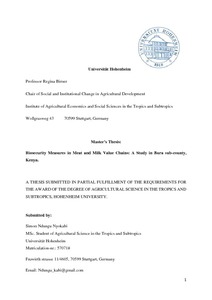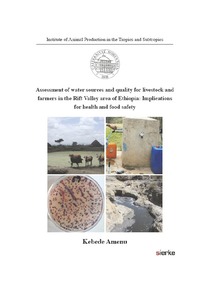Location
The University of Hohenheim is a campus university located in the south of Stuttgart, Germany. Founded in 1818, it is Stuttgart's oldest university. Its primary areas of specialisation had traditionally been agricultural and natural sciences. Today, however, the majority of its students are enrolled in one of the many study programs offered by the faculty of business, economics and social sciences. The faculty has regularly been ranked among the best in the country, making the University of Hohenheim one of Germany's top-tier universities in these fields. The university maintains academic alliances with a number of partner universities and is involved in numerous joint research projects.
Source: Wikipedia (d.d. November 9th 2017)
Members:
Resources
Displaying 6 - 10 of 29Population regulation of African buffalo in the Mara–Serengeti ecosystem
A meta-analysis of the effects of communal livestock grazing on vegetation and soils in sub-Saharan Africa
Extensive livestock grazing is one of the most common and widespread forms of land uses in sub Saharan Africa (SSA). Studies assessing the effects of extensive livestock grazing on vegetation and soils in SSA are inconsistent in the direction and magnitude of study outcomes.
Biosecurity measures in meat and milk value chains: A study in Bura Sub-county, Kenya.
Livestock value chains are an important source of employment, income and nutrition in developing countries. Increasing income has led to high demand for animal source products. Zoonotic diseases pose a public health risk to people producing, handling, processing and consuming animal products; with value chains creating a contact networks for transmission. Biosecurity measures constitute a cheap, integrated approach and affordable way of disease control from farm to fork as advocated by the concept of ‘One Health’ and ‘EcoHealth’.
Assessment of water sources and quality for livestock and farmers in the Rift Valley area of Ethiopia: Implications for health and food safety
Adequate access to good quality drinking water is an important prerequisite for the wellbeing
and survival of people. Increasing competition over scarce freshwater resources with
continuous quality deterioration is becoming a serious problem in many developing countries
like Ethiopia, where the technical, socioeconomic and political conditions are impeding the
proper utilization of the required resource. The concern of low quality water is either due to
direct health impacts of poor quality drinking water or a reduction in the palatability of water




